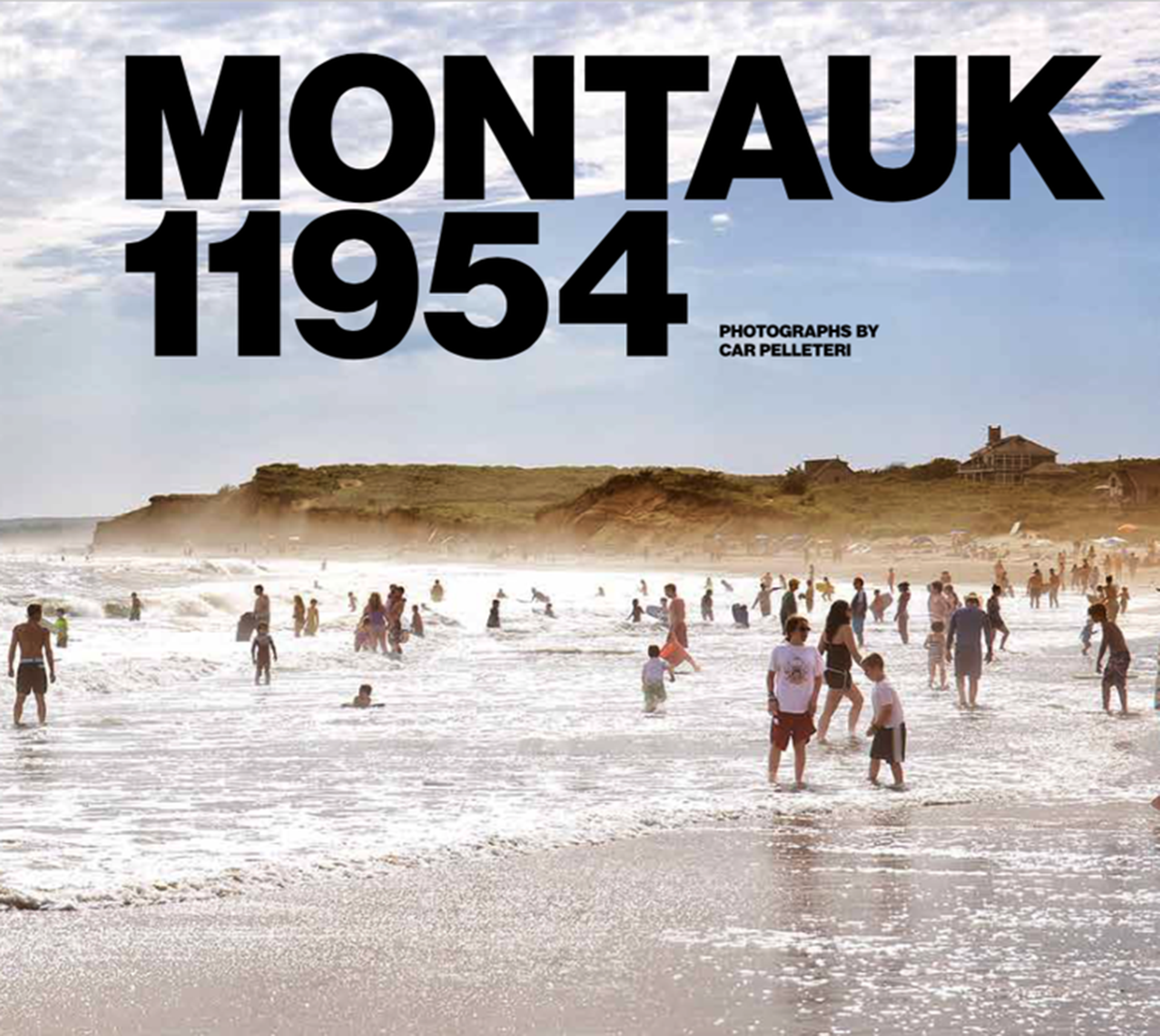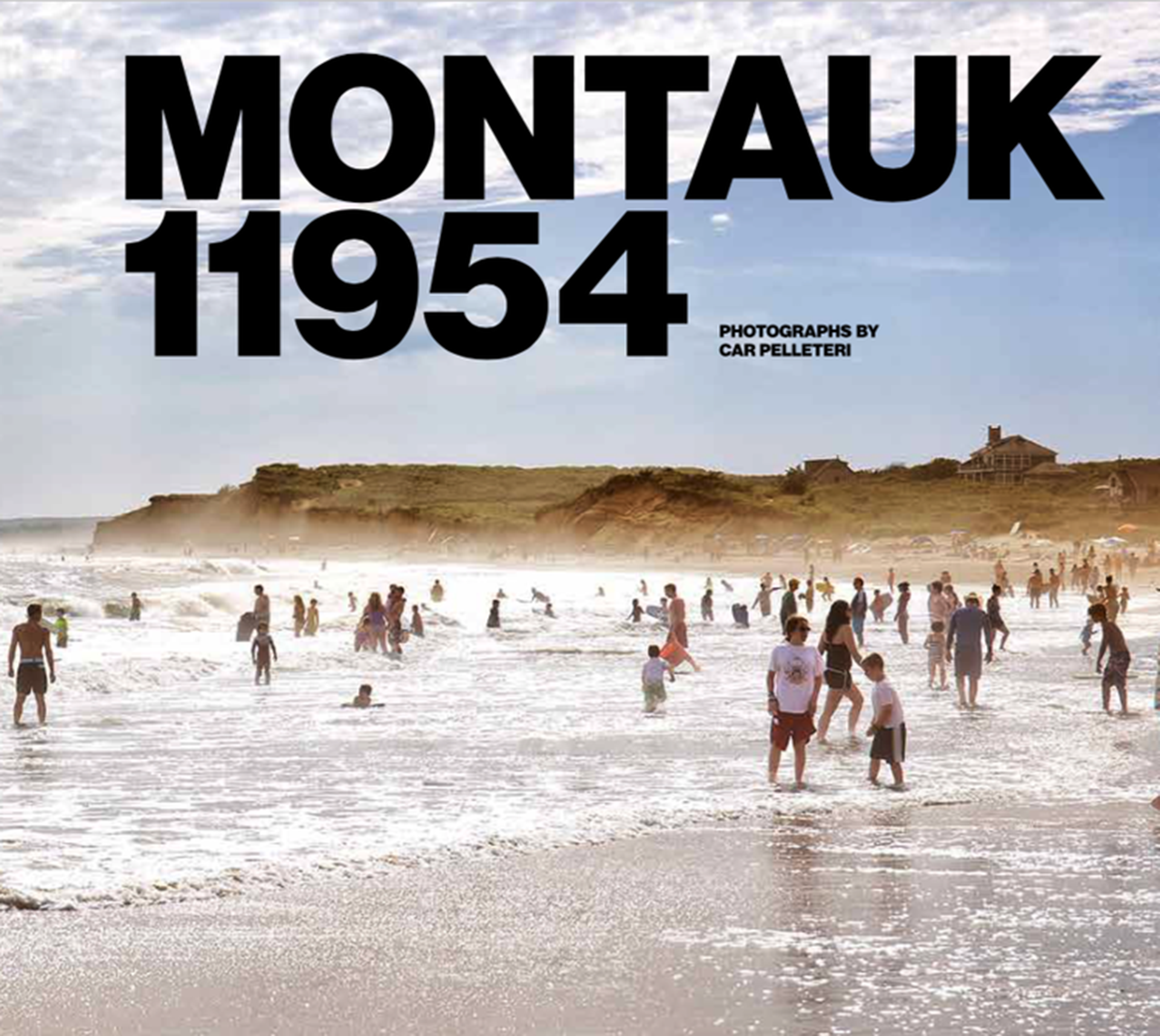‘Montauk 11954’ Reflects Changing Landscape


Once part of an un-Hampton cluster that also comprised the villages of Bridgehampton and Sag Harbor, Montauk, or The End, as it is affectionately known on bumper stickers, used to signify affordable summers. Despite the surge of visitors during “the horrible hundred” (the traffic-crazy time between Memorial Day and Labor Day), Montauk could, for years, lay claim to be far from the madding crowd invading the Hamptons. No more.
Celebs still buy or rent in Montauk, local waterholes remain go-to attractions, and the ocean continues to attract serious surfers, especially in July and August when the slightly diminishing year-round population of approximately 3800 swells to what town police estimate as 30,000. But as media reports increasingly document, there are no more un-Hamptons on the East End, and commercial fishing, the mainstay of the working class in Montauk, no longer defines an area many young and upscale house-sharers now refer to as hip and hot.
Thus, Carissa “Car” Pelleteri’s new photographic homage to this famed and fabled “highly photogenic . . . unique place” takes on special significance, as she acknowledges that this is a “critical” time for Montauk, a place now in ambivalent thrall to a summertime economic boom that threatens long-time local businesses and the environment.
While the book’s images testify to the magic of Montauk — “its quiet light, the beauty, the peace and some of the great people that make the town what it is” — Pelleteri notes that she also included shots of “precious artifacts, old stores, and motels” that have since gone, lending the volume an aura of nostalgia.
“Montauk 11954” is not Pelleteri’s first collection of photos of the area. In 2014, she published a limited-edition, mainly locally distributed, volume, “Surf & Turf: Montauk,” which exemplified her passion for the people and places of Montauk. It also included brief interviews. The new book, not a second edition of “Surf & Turf,” is all photos, with fewer portraits (10 out of a total of 103 pictures) and wider landscape shots of some of her favorite scenes — horses at Deep Hollow Ranch, LIRR tracks, fish, food, and steep “Hoodoo” cliffs with gouged-out shadows that would seem pre-historical, were it not for a tell-tale surfer dude and his board.
Pelleteri is proud of her training in film and for what she assesses as an intuitive sense of composition that doesn’t require her to do long set-ups. She’s also an unapologetic acolyte of color photography. “Many people think they can be photographers and shoot in black and white, hoping that they may hitch a ride of the ‘classic’ bandwagon,” she said. “Once I started shooting in color and analog c-printing, I never went back to black and white. I see color photography as a more truthful and honest interpretation/documentation of my subjects. Color, whether vivid or muted, is simply beautiful. Color affects our mood and subconscious.”
When she first came to Montauk as a fashion photographer’s assistant in June 2000, she was hooked immediately “by hearing and smelling the ocean just feet away from the retro East Deck Motel” where she was staying.
The images (a few carried over from “Surf & Turf”) prove that good photographs — and their sequential presentation in a book — are far from random. In “Montauk 11954,” Pelleteri begins “soft” — vegetation, a blurry swath of ocean in the background — and moves on to signs: bait and tackle shops, seafood, Lunch, the Breakers Motel. Surfboards line up against a fence, followed by a double-page spread of Montauk daisies. Then, compositions grow full-frame complex with dramatic linear perspective, as in “Tunnel of Green,” an angular shot of disappearing railroad tracks that give way to tactile foliage.
Many images exhibit geometric harmony, a balancing of lines and forms that prompts the eye to take in the whole while also appreciating parts. Where there are people, there are never crowds. Crisp background details avoid mannered attempts at aerial perspective.
Bookends matter: The first photo, “Pink Flowers, October 2017,” speaks to a familiar landscape feature in Montauk, but it is the last image in the book, “Montauk LIRR station, 2017” that is telling, perhaps unintentionally. A double-spread, up-close shot of two railroad cars, the old Montauk Manor slightly blurred in the distance, the image clearly signals the end of the line. But under the prominent Montauk station lettering a smaller, orange sign admonishes “watch the gap” that may suggest a subliminal theme of the book. Between an eradicated past and an uncertain future, let progress be bold but respectful of history and community. As time has shown, it’s the Montauk way.



